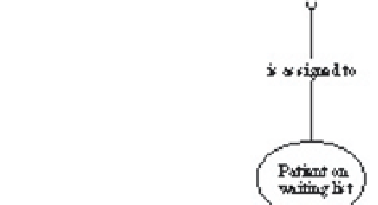Database Reference
In-Depth Information
Generic Conceptual Model
The generic conceptual model (GCM) is a set of representation formalisms that can
record relevant information about the problem from a neutral viewpoint, that is, not in any
way linked to the future implementation. Specifi cally, the GCM is composed of four dif-
ferent representation formalisms:
•
Concept map:
This is the principal representation formalism of the GCM. It is a
graphic formalism, inspired by conceptual maps, derived from the work of Ausubel on
Learning Theory and Psychology and later formalized by Novak and Gowin (1984).
The concept map can set out and describe concepts and associations between concepts
present in the problem domain. From the viewpoint of form, concept maps are, as shown
in Figure 3, quite similar to semantic nets. However, there are profound differences
of substance between the two model types. Specifi cally, concept maps and semantic
nets differ with regard to the way that the two formalisms are designed to represent
the knowledge. Semantic nets are designed to describe knowledge non-ambiguously;
that is, it should be possible to ascribe a well-defi ned meaning to any node and link,
although this is not possible in some cases (Woods, 1975). On the other hand, concept
maps are intrinsically ambiguous; that is, it is neither possible nor desirable
a priori
to ascribe any particular conceptual or computational meaning to concepts and as-
sociations. Additionally, concept maps can be used to build combinations of concepts
and associations (called
propositions
) of varying complexity, with an expressiveness
approximating natural language. Finally, concept maps can be structured hierarchi-
cally, similarly, albeit founded on different theoretical principles, to data fl ow diagram
hierarchies (Dieste, 2003).
•
Identifi cative dictionary:
This is a tabular representation formalism that can record,
during the early phases of analysis, concepts and associations, and is designed to make
the concept map easier to use. Table 1 shows an example.
The apparent duplication in recorded information in Table 1 (two different entries for
room, ward and complaint) is due to a GCM technicality: Two different elements in the
concept map are considered different even if they bear the same name. This rule prevents
Figure 3: Example of a concept map



